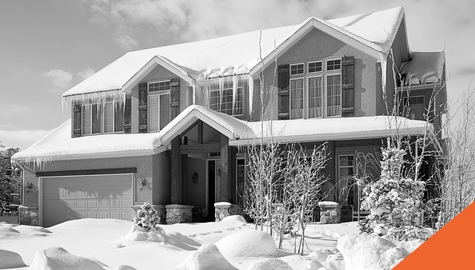What Does Home Insurance Cover? Get the Answers You Need
Wednesday, 27 December 2023
Home insurance is a crucial safeguard that protects one of your most significant investments. From understanding the different coverages included in policies to choosing the right protection for your home, this comprehensive guide aims to provide valuable insights and tips on the various aspects of home insurance. This should help you make an informed decision when securing your property and possessions.
Transcript: Ultimate Guide to Homeowners Insurance
What Does Home Insurance Cover?
Home insurance coverage is used to shield homeowners from a range of potential risks. This essential protection encompasses the structural integrity of your home, shielding it from damage caused by perils like fire, storms, or vandalism. Additionally, personal property coverage ensures that your belongings, including furniture, electronics, and clothing, are financially protected in cases of theft or specific damages.
The liability protection offered by home insurance covers legal expenses and medical bills if someone is injured on your property and you are deemed responsible. This provides a financial safety net for unexpected accidents. Furthermore, in the unfortunate event that your home becomes uninhabitable due to a covered incident, Additional Living Expenses (ALE) coverage assists with the costs of temporary accommodation and living expenses.
In essence, home insurance provides peace of mind and financial support in the face of unforeseen events.
Home and Building Insurance Explained
If the terms home insurance and building insurance sound like they are referring to the same thing, you wouldn’t technically be wrong. These terms are often used interchangeably. That said, there are some slight differences depending on the context in which you use them. Home insurance is a broader term encompassing various forms of coverage, such as liability, additional living expenses, and contents. Building insurance is also included within home insurance and covers the physical structure of a building or home. Think of building insurance as a subsection of home insurance.
Types of Homeowner’s Insurance
Standard Homeowner’s Insurance
As the most basic level of home insurance, this offers protection for specific items listed in your policy. It is a cost-effective option but entails more financial risk in the event of unforeseen circumstances. These types of plans cover only the risks or perils explicitly named in the policy, such as fire, lightning, smoke, and theft. While it is a more affordable choice, homeowners should be mindful of its limitations and consider the potential financial exposure they may face.
Broad Form Insurance
Known for providing a broader scope of protection than standard policies, this type of home insurance falls between the basic and comprehensive options. Positioned as a mid-tier option, this policy primarily focuses on significant items like the building itself, while also extending basic coverage to other specified items on the policy. This intermediate level of coverage aims to strike a balance between affordability and comprehensive protection, making it a suitable choice for homeowners seeking a more robust insurance plan without opting for the highest level of coverage.
Comprehensive Insurance
Also known as “all-risk” or “special form,” this is the highest and most common tier. It provides the most extensive coverage by safeguarding your home and belongings from all types of losses, except for exclusions explicitly listed in your policy. Examples of exclusions include earthquakes, backup of sewers and drains, and equipment breakdown. In essence, it is designed to be an all-encompassing safety net, offering broad coverage against a wide range of risks to provide homeowners with peace of mind.
How to Choose the Right Type for Your Needs
Given the diverse array of options available, choosing the right policy for your needs can be a challenging endeavour. Navigating through the multitude of choices requires a thoughtful approach, ensuring that your selected policy not only meets your current needs but also provides flexibility for future considerations.
When you work with a broker from Billyard Insurance Group, you’ll have an industry expert with you every step of the way. They can source the best policies from an extensive network of reputable insurance partners, answer any questions you have, and customize coverage to create a policy that is tailored to your situation.
Building and Contents Insurance
Understanding the distinction between these two insurance components is essential when choosing or customizing your home policy. Building insurance safeguards the physical structure of your home, including fixtures and built-in items, against specified risks.
What does home insurance cover for belongings? Known as contents insurance, your policy protects your personal and movable items within the home. Many homeowners opt for a comprehensive home insurance policy that includes both building and contents coverage to ensure comprehensive protection for their property and possessions.
To better assess the value of your contents, consider the following tips:
- Go through each room of your house and create a detailed inventory of your belongings. This includes furniture, electronics, appliances, clothing, jewelry, artwork, and other valuable items.
- Assign values to each item on your list. The replacement value is the cost to purchase a new, similar item at today’s prices. Use receipts, appraisals, or online research to estimate replacement costs. Keep in mind that some items will depreciate over time.
- Consult professionals for high-value items or unique possessions to ensure accurate estimates. You may need to seek additional coverage depending on your policy's limits.
Types of Property Insurance
In addition to standard home insurance, the types of property insurance available in Canada cater to the diverse needs of homeowners and property owners. Here are some other forms of property insurance that can protect you and your assets.
Tenant's Insurance
Also known as renter's insurance, this type of policy is tailored for tenants. It covers personal belongings, liability, and additional living expenses if the rented dwelling becomes uninhabitable due to a covered event. Tenant's insurance is essential for renters to protect their possessions and mitigate liability risks.
Condo Insurance
Condominium insurance is designed for condo owners and provides coverage for personal property, improvements made to the unit, and liability. Condo insurance recognizes the unique ownership structure of condominiums, addressing the specific risks that may arise when living in a condo building.
Seasonal Property Insurance
Seasonal property insurance is suitable for individuals who own vacation homes, cottages, or other seasonal properties. This type of insurance offers coverage for the property's structure and contents, safeguarding it against risks during occupied and unoccupied periods.
Landlord Insurance
Landlord insurance, also known as rental property insurance, caters to property owners who rent out residential units. It typically covers the structure, liability, and, in some cases, personal items used for maintaining the rental property. Landlord insurance is a must-have for anyone leasing out space in any of their properties.
Commercial Property Insurance
Designed for businesses, commercial property insurance protects physical assets, including buildings, equipment, inventory, and furniture. It also covers business interruption, liability, and many other issues that commercial property owners might encounter in Canada.
These are just a few examples of the types of property insurance available in Canada. The specific coverage needs can vary based on factors such as property type, location, and individual circumstances.
Practical Home Insurance Tips
Understand Your Coverage Needs
Choosing the right coverage requires a thoughtful approach. Start by assessing your coverage needs. Take stock of your property's value, including the structure and personal belongings. Consider potential risks in your area, such as natural disasters or high crime rates. Understanding your coverage needs lays the foundation for building a policy that adequately protects your home and valuables.
Shop Around for Quotes
When it comes to home insurance, one size doesn't fit all. Shopping around for quotes from different insurance providers is critical to finding the best coverage at the most competitive rates. Don't settle for the first quote you receive; instead, compare offers from multiple insurers. Look beyond the premium and consider coverage limits, deductibles, and additional features. This proactive approach ensures you get the most value for your insurance investment.
Read the Fine Print
Before committing to a policy, take the time to read and understand the fine print. The policy's terms and conditions, exclusions, and limitations are essential details often buried in the fine print. Be aware of any coverage gaps and inquire about items requiring additional endorsements or separate coverage. A clear understanding of the policy details will help prevent surprises in case of a claim.
Consider a Higher Deductible
While it may be tempting to opt for a lower deductible, choosing a higher one can lead to lower premium costs. Assess your financial situation and determine a deductible that strikes the right balance between affordability and potential out-of-pocket expenses. Remember that a higher deductible means you'll need to cover more of the upfront costs in the event of a claim.
Update Your Policy Regularly
Life changes, and so do your coverage needs. Regularly review and update your policy to reflect changes in your home's value, improvements, or acquisitions of high-value items. Inform your insurance provider about renovations, additions, or significant purchases to ensure your coverage accurately reflects your current circumstances.
Take Advantage of Discounts
Insurance providers often offer various discounts that can significantly reduce your premium. These discounts may be based on factors like home security systems, smoke alarms, or bundling home and auto insurance. Inquire about available discounts and take advantage of them to maximize your savings without compromising coverage.
Document Your Belongings
Creating a detailed inventory of your belongings is a crucial step in the event of a claim. Document your possessions through photographs, videos, or a written list. This inventory helps in the claims process and ensures that you have a comprehensive record of your valuables for insurance purposes.
Understand Replacement Cost vs. Actual Cash Value
When evaluating coverage options, understand the difference between replacement cost and actual cash value. Replacement cost coverage reimburses you for the cost to replace or repair damaged items without depreciation, offering more comprehensive protection. On the other hand, actual cash value factors in depreciation, resulting in a lower payout. Choose the option that aligns with your preferences and budget.
Review Your Policy Annually
Review your policy annually to account for any changes in your property, lifestyle, or insurance needs. An annual review ensures that your coverage remains up-to-date and relevant, providing ongoing protection that evolves with your circumstances.
Consult with an Insurance Expert
Consulting with an insurance professional from BIG can help clarify complex policy details, address specific concerns, and ensure you make informed decisions. Our experts can also provide valuable insights tailored to your unique situation, helping you navigate the intricacies of home insurance with confidence.
Final Thoughts
In conclusion, taking a proactive and informed approach to home insurance is key to securing the right coverage for your needs. By understanding your requirements, comparing quotes, reading the fine print, and staying proactive in policy management, you can build a comprehensive and cost-effective insurance plan that offers peace of mind for your home and belongings. If you’re still wondering, “What does home insurance cover?”, contact your nearest BIG branch, and one of our insurance experts will provide more details on how it will protect you during life’s unexpected moments.



